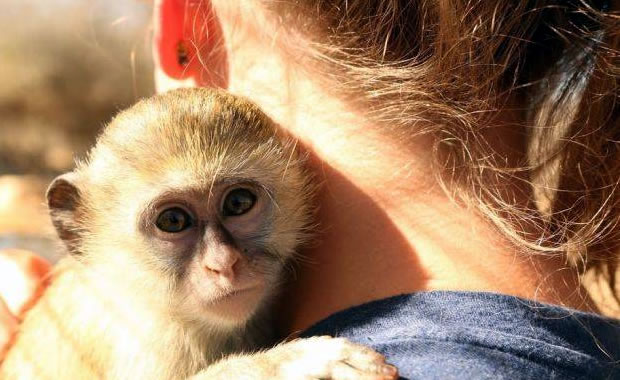Creature Profile
The fork-crowned lemur, or fork-marked lemur is from the family, Cheriogaleidae, containing the various dwarf and mouse lemurs all found in Madagascar. There are four subspecies of the fork-crowned lemur, the Masoala fork-crowned lemur (Phaner furcifer furcifer), the Amber Mountain fork-crowned lemur (Phaner furcifer electromontis), the Pale fork-crowned lemur (Phaner furcifer pallescens), and the Pariente's fork-crowned lemur (Phaner furcifer parienti). Like all other lemurs in the Cheriogaleidae family, the fork-crowned lemur is much smaller than other lemurs and one of the smallest of the primates. They have small ears, large, close set eyes, and long hind legs. The head and body length ranges from 227 to 285 mm and the tail adding an additional 285 to 370 mm to its total length. Fork-crowned lemurs take their name from the stripe that splits down the top of the head and continues on each side down the eyes. They are excellent climbers and can also jump far, using their long tails for balance. When on the ground, they move by hopping on their hind legs.
Fork-crowned lemurs prefer to live either in pairs or alone and they protect their territory very aggressively. They are very vocal especially when there is a sign of danger. They are almost completely nocturnal and arboreal (preferring to stay in the trees and rarely coming to the ground). Their diet consists mainly of insects and the gum of trees found in the temperate deciduous forests of Madagascar. They are very good at harvesting the gum substance possessing "dental combs" on their claws which they use to scrape the gum oozing from insect holes found in the trees. Little is known about the fork-crowned lemur's reproductive habits, but generally, fork-crowned lemurs are known to mate in monogamous pairs, and once bonds are formed between males and females, they share a tree hole and are hardly ever separate. The female gives birth to only one offspring.
The Amber fork-crowned lemur is only found on Mt. d'Ambre in northern Madagascar. The Masoala fork-crowned lemur is found on the Masoala peninsula of northeastern Madagascar. The pale fork-crowned lemur is found in western Madagascar from the Fiherenana River to the region of Soalala, and the Pariente's fork-crowned lemur is found in the Sambirano region south of Ambanja, which includes the Ampasindava Peninsula south to the Andranomalaza river. The main cause of decline is habitat destruction and the clearing of forest land for producing pasture land and room for crops. A national park has been created in Madagascar's Masoala peninsula so that there is preserved habitat for fork-crowned lemurs.
Wikipedia Article

|
Wikipedia Article Copyright Notice: This article is licensed under the GNU Free Documentation License. It uses material from the Wikipedia article "Fork-marked lemur". |
April 29, 2017
Glenn, C. R. 2006. "Earth's Endangered Creatures - Fork-crowned Lemur Facts" (Online). Accessed 4/25/2024 at http://earthsendangered.com/profile.asp?sp=894&ID=1.
Need more Fork-crowned Lemur facts?



